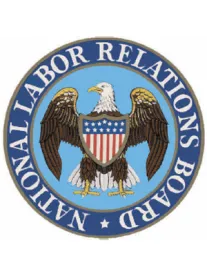As we have noted at times, the human element in labor relations makes for interesting situations. One of the more interesting issues is the timeliness of representation petitions, which, despite the existence of clear rules, can still be disrupted by human action.
A union, an employee or an employer can all file a representation petition with the NLRB. The union’s petition is called an “RC” petition, the employee’s (when filing they usually are seeking to end union representation) an “RD” petition, and the employer’s petition is styled an “RM” petition.
In order to be valid, the representation petition must be filed during what is deemed to be an open period where a question concerning the representation of employees can be decided. The NLRA and NLRB case law contain bars to the filing of a petition,– essentially blackout periods,–during which the filing would not be timely and would result in the dismissal of the petition. One bar is the “election bar” which, according to Section 9(e)(2) of the NLRA prevents an election from being “conducted…in any bargaining unit or any subdivision within which, in the preceding twelve-month period, a valid election shall have been held.” Under the election bar, a newly organized union gets a year to negotiate a contract before its status can be challenged. If the union loses the election, the employer is spared the disruption of an election campaign for twelve months.
To make matters more confusing, there is a one-year certification rule, which bars the filing of a petition for one-year following the date of certification of a union, which usually occurs some days after the election.
Another bar is the “contract bar” which, generally, states that no petition may be filed during the existence of a valid collective bargaining agreement. The Board evaluates the existence of a contract in fairly practical terms. There must, for example, be an actual contract that can be ascertained from existing writings. It wouldn’t do to accept oral assertions in this regard; the issue is simply too important. The contract also must be signed by both parties. If a signed contract exists, then a number of other rules apply to the different parties. For instance, a valid contract may only bar an employee petition for a period of three years. The rules are different for employer petitions and a valid contract bars the employer from filing a petition for its entire term.
What happens if there is a signed, valid contract but the “effective dates” of the contract are set in the future? Would a representation petition filed after the signatures but before the effective dates be timely?
Recently, a divided NLRB (Ring, Kaplan and Emmanuel) voted that a petition filed before the effective dates of a collective bargaining agreement regardless of whether that agreement had been signed does not bar an RM petition.
In Silvan Industries, 367 NLRB No. 28 (October 26, 2018) the Board was confronted “with a sequence of events that apparently has never happened before, at least so far as published decisions disclose.”
Newly Organized Employer Bargains With Union For One Year
The employer operates a manufacturing facility and a union was successful in a representation election. The dates of events are important to the discussion of what happened next:
- October 16, 2015 – the union was certified. A new election could not occur before one year from this date.
- October 13, 2016 – the parties reach a tentative agreement. This date, falling a few days before the end of the year of certification is important. It is very common for parties to reach an agreement at or near the end of the first year of bargaining because the union knows that after the anniversary date it is vulnerable to a new election (or withdrawal of recognition by the employer).
- October 15, 2016 – the employees ratify the agreement. The parties agree to meet on October 25, 2016 to execute the contract.
- October 25, 2016 – an employee presents the employer with a petition in which employees expressed opposition to continued representation. The employer now had good faith, objective evidence that the union’s majority status was in doubt. Without the existence of the collective bargaining agreement, the employer would have been privileged to withdraw recognition.
- The employer files an RM petition.
- Shortly after filing an RM petition, the employer signed the collective bargaining agreement.
The collective bargaining agreement, unusually, had effective dates in the future- from November 7, 2016 to November 3, 2019.
Regional Director Dismisses Petition as Untimely, Employer Appeals
The Regional Director dismissed the RM petition without a hearing, finding that the employer was precluded from challenging the status of the union citing case law holding that an employer may not withdraw recognition once a valid collective bargaining agreement has been reached. Auciello Iron Works, 317 NLRB 364 (1995), enfd. 60 F.3d 24 (1st Cir. 1995), affd. 517 U.S. 781 (1996). In Auciello, the Board held that an employer was precluded from withdrawing recognition from the union upon acceptance of an offer by the union to form a collective bargaining agreement.
The employer appealed the dismissal of its petition to the NLRB.
Divided NLRB Reverses Regional Director, Holds Case Law Supports Timeliness of RM Petition
The Board majority noted first there were competing policy considerations at play in determining the timeliness of a representation petition. The first is to promote stability in collective bargaining by prohibiting the challenge to representation during a valid collective bargaining agreement. The Board noted that “[o]n the other hand, delay in resolving an otherwise-valid question concerning representation affects the Section 7 rights of employees who do not support continued union representation.” The Board noted that it had over the years developed several “requirements” that must be met before a collective bargaining agreement can bar an election, including, that it be in writing, signed and specify an effective date on its face.
Analyzing the question before it, the Board reviewed the case law and concluded “time and time again that the period during which a collective-bargaining agreement bars an election runs from the its effective date.” The Board noted that it often applies different standards to petitions filed by unions and employees to those filed by employers. For example, the Board recognized that under the case law the employer in this case could not have lawfully withdrawn recognition but held that standard did not apply to the case. The Board addressed Auciello, concluding that “the standard for determining whether an employer could lawfully withdraw recognition does not govern the case.” This is because the Board’s ruling in Levitz Furniture Co. of the Pacific, 333 NLRB 717, 723 (1996) which held that an employer may file an RM petition in circumstances where it could not lawfully withdraw recognition. The Board held that its “contract-bar doctrine does not warrant dismissal of the petition because no contract was in effect when the petition was filed.”
The Board did not see this case as far-reaching in that it had “never happened before” and that “it is destined to occupy a deservedly obscure nook in the Board’s representation caselaw.”
Dissent Sees Instability With Rule
Member McFerran dissented noting that the rules regarding bars to an election are different for employers because they hold a great deal of power in bargaining. McFerran noted that “were the Board to focus on the effective date of the contract (rather than the date of its formation) when applying the ‘contract bar’ doctrine in cases like this one, employers would have a strong incentive to seek delayed effective dates, a result just as contrary to the Act’s goal of encouraging collective-bargaining agreements (and their stabilizing effects) as a deliberate delay in reaching an agreement in the first place.”
McFerran knocked the Board majority even further:
Instead of engaging in a careful analysis of policy and precedent, the majority retreats into empty formalism: because the collective-bargaining agreement had not gone into effect, the contract-bar doctrine does not apply. But why this should be the case, the majority fails to explain in any persuasive way. Policy and precedent actually dictate a different result: ?When an employer enters into a collective-bargaining agreement with a union, even an agreement with a delayed effective date, it should not be permitted immediately to undermine the agreement, by challenging the union’s majority status.
Takeaways
This is truly an unusual situation. We are not told why the parties set the effective date of the agreement in the future. One can think of a few innocuous reasons why the dates were set in the future: the employer didn’t want to negotiate the next agreement until a period of time that was less busy for its operations, the parties agreed to align the effective dates with upcoming pay increases, etc. There is no indication that the employer knew about the employee’s efforts to shed the union, and requested the effective dates be pushed off. The union certainly didn’t complain about it either through this proceeding or by filing an unfair labor practice.
Member McFerran noted that the effective dates were only two weeks away from signing. But even a single day in representation bar situation can make a difference. That two week period is the difference between the employees getting a say in union representation now or three years from now. The desires of employees are often lost when the Board discusses the policy of stability in labor relations. Although not part of this case, the Board’s blocking policy, which allows the blocking of a decertification or representation petition based on the mere allegation that unfair labor practices have been committed, often frustrates any chance for an election for years.



 />i
/>i

